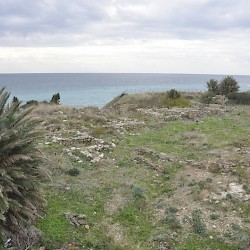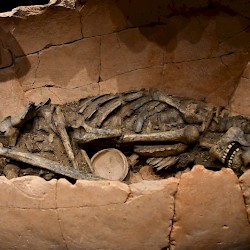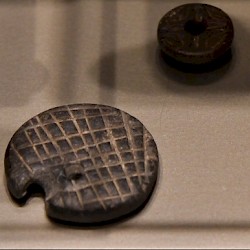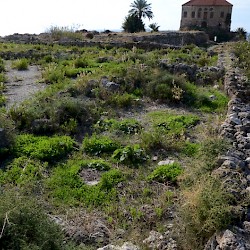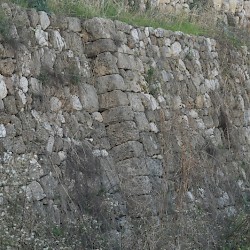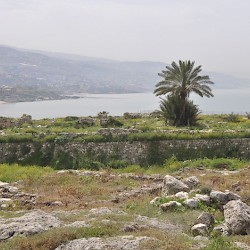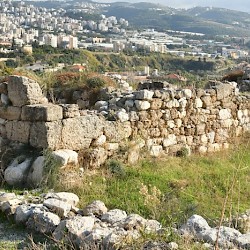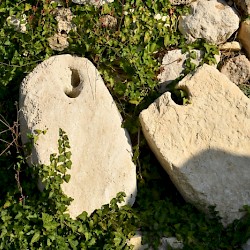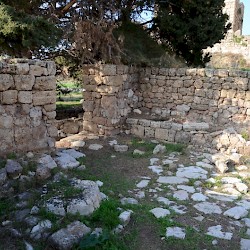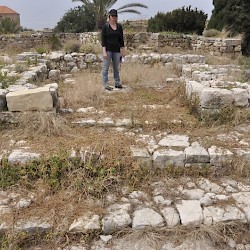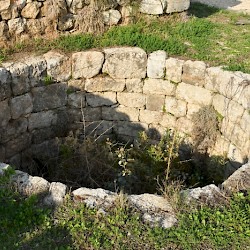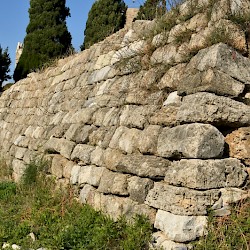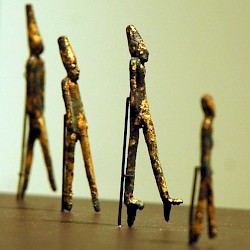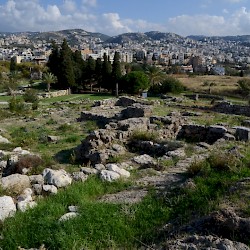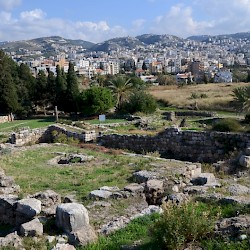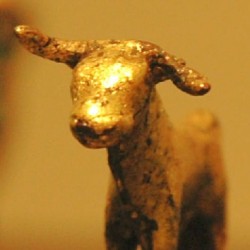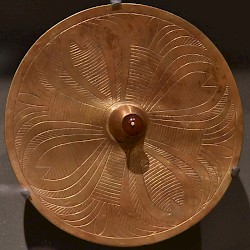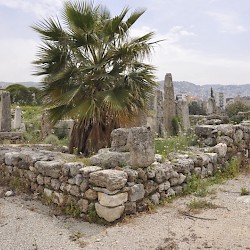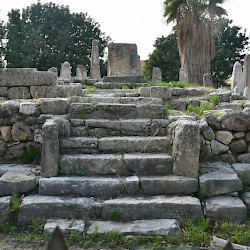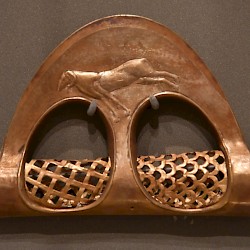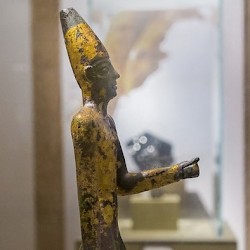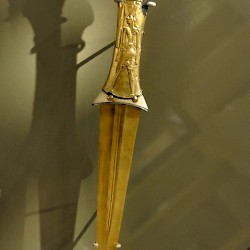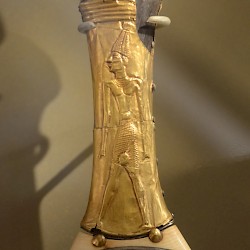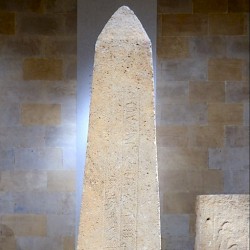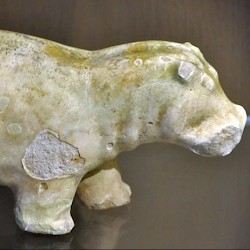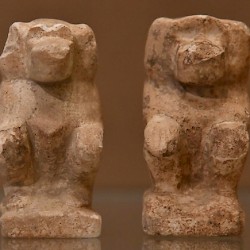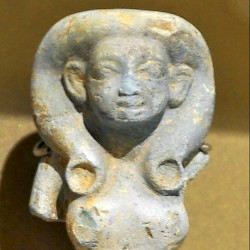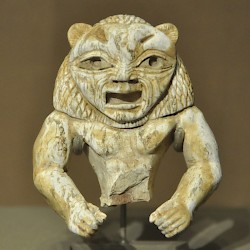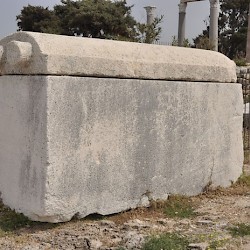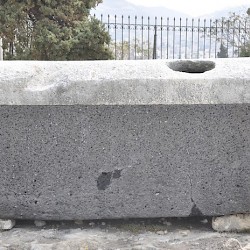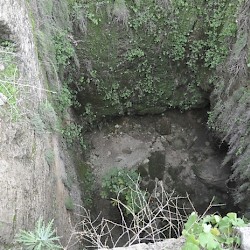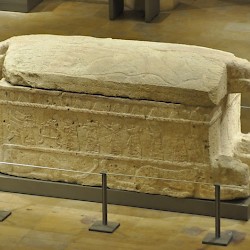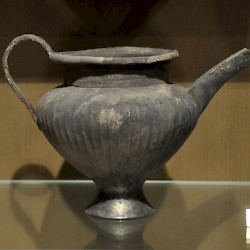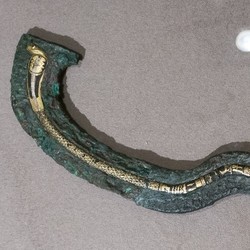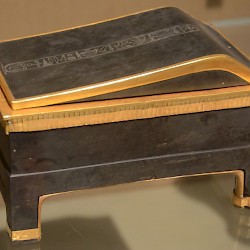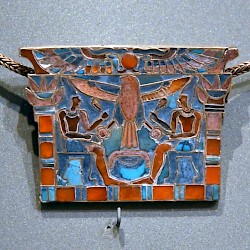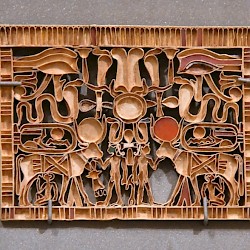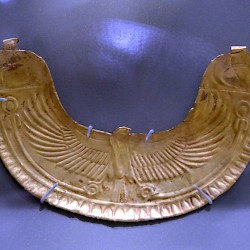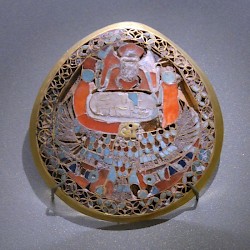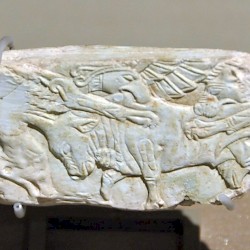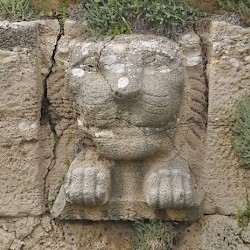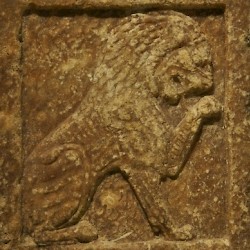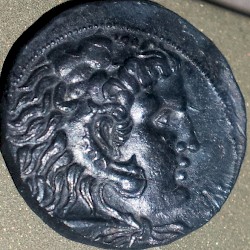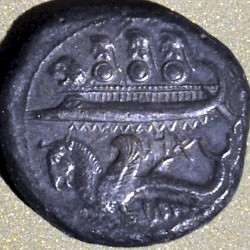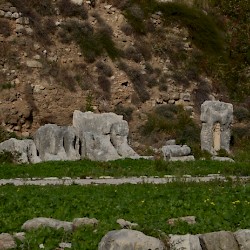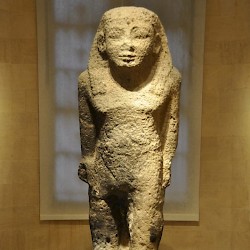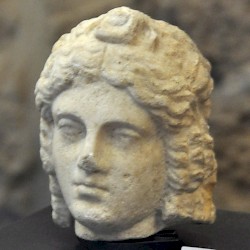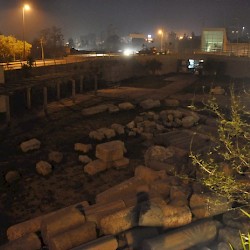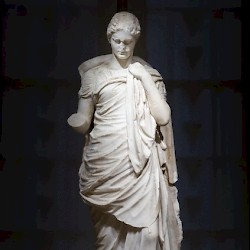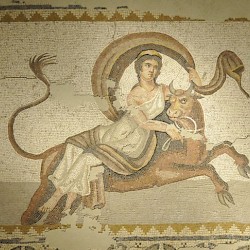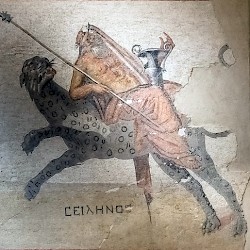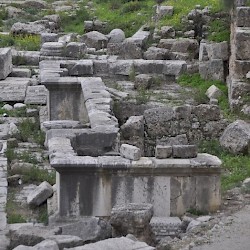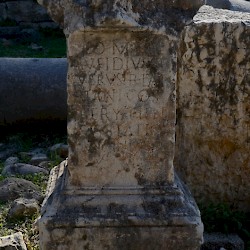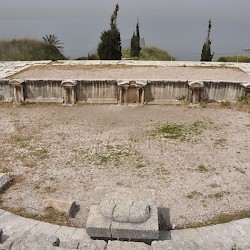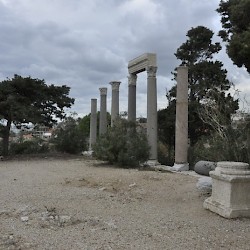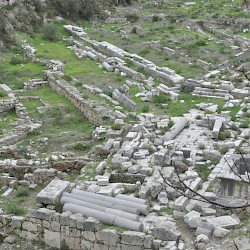Byblos
Q173532Byblos (Hebrew גבל; Greek Βύβλος): one of the oldest cities in the world, inhabited from the Neolithic until the Middle Ages, modern Jubayl.
Origins
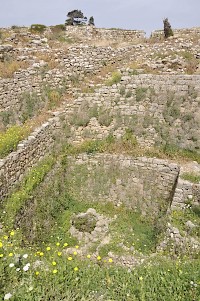
Byblos is situated on a promontory with two summits, separated by a valley with a well, which was about nineteen to twenty-two meters deep. The height of the double hill made this place easy to defend, the well offered water, while there were two good ports: Byblos was an excellent place to settle. The first inhabitants arrived in the Ancient Neolithic age and lived on the western slope of the promontory, in simple huts with floors of pebbles, plastered with crushed limestone. There was some simple agriculture, some animal husbandry, some fishing, and some trade in obsidian, which was imported from Anatolia.
The Chalcolithic in Byblos begins in c.3800 BCE. The old, huts and multicellular houses were replaced by rectangular houses, built of natural stone and limestone. These houses had rounded edges and earthen floors, with silos and hearths. Archaeologists have found ceramics, funerary jars, and copper instruments. The copper must have been imported from Cyprus and the Caucasus. There were some bone imports from Sudan, while lapis lazuli arrived all the way from Bactria.
Around c.3200 BCE, a phase started that is called "pre-urbanization". The narrow paths between the old rectangular houses of the fishermen's village became the streets of a town, the house became bigger - ten tot twelve meters long - and can perhaps be described as enclosures.
Early Bronze Age
In the third millennium, the city became a real city with a vast commercial network. Among the exports was timber: after all, the cedar trees were not too far away on the slopes of the Lebanon Mountains. Other products included olive oil, wool, pitch, and resin, which were exported to the Old Kingdom of Egypt (dynasties 3, 4, and 5, c.2675-2350 BCE); in return, Byblos received papyrus, rope, cereals, pulses, flax. Part of this was again exported to Anatolia. Fishery and agriculture remained important as well. The wealth of the city is shown in the Great Residence, which measured about 900 square meters and had a small temple next to it, decorated with stone anchors.
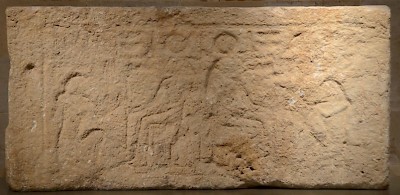
Byblos also was an important religious center. There was a sacred pool, a temple dedicated to Baalat Gebal ("Lady Byblos"), and a sanctuary of an unknown deity that was called the "L-shaped temple" by its excavators. The first texts, written in Egyptian hieroglyphic, date back to this period. Byblos may have been an Egyptian colony, although this cannot be proved with certainty. In any case, the relations with the country of the Nile were to remain close for centuries to come.
The Old Kingdom of Egypt collapsed during the Sixth Dynasty (c.2350-2200 BCE). In the Levant, the Amorites became more important and captured Byblos. The L-shaped temple may have been destroyed at this time.
Middle Bronze Age
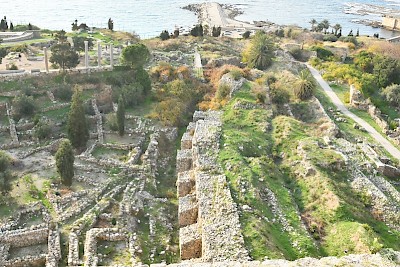
When in Egypt, the rulers of the Middle Kingdom restored the unity of their country, trade contacts with Byblos were restored as well. During the dynasties 12 (c.2000-1780 BCE) and 13 (c.1780-1660), the products mentioned above were exchanged again. Egyptian influence in Byblos can be discerned in the rebuilt L-shaped temple, which the archaeologists have called the "temple of the obelisks". It was dedicated to a Levantine deity, perhaps the healing god Reshef, and is known for all kinds of Egyptian votive offerings. The temple of Baalat Gebal was rebuilt as well.
In c.1700 BCE, the Hyksos appeared, a group of people that fought with horse-drawn chariots, lances and spears. They rebuilt the city walls of Byblos. The Hyksos culture spread from the Levant to Egypt, where Hyksos kings ruled in the Delta of the Nile (dynasty 15, c.1648-1550 BCE). Trade between Byblos and Lower Egypt continued to flourish.
Late Bronze Age and Early Iron Age
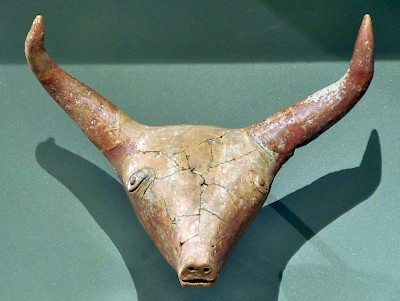
During the Egyptian New Kingdom - that is, during the dynasties 18, 19, and 20 - the tables were turned: Egypt expelled its Levantine overlords and subdued the Levant. After the conquests of Thutmose III (r.1479-1425), Byblos became a vassal kingdom. However, it regained some freedom when the Hittites, an Indo-European nation living in Central Anatolia, arrived on the scene. Some sixty of the Amarna letters document Egyptian diplomatic efforts to keep the kings of Byblos, Rib-Hadda and his successor Ili-Rapih, loyal.
How much the Egyptians considered Byblos to be part of their world, can be deduced from mythology. The goddess Isis, who was looking for the dead body of her husband Osiris, met the servants of the king of Byblos near the well and they invited her to the palace, where she found the god's body buried in one of the pillars.note
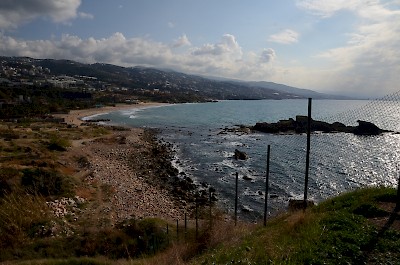
At the end of the Bronze Age, the Sea People destroyed several Levantine cities. Egyptian power was limited to the valley of the Nile. Evidence can be found in the funny and melancholic story of Wen-Amun, an Egyptian envoy who had to buy cedar wood from king Zakar-Baal of Byblos. The text is literary in nature but presupposes a realistic background: Egypt had less influence than it used to have and Byblos had started to act as a minor but independent power.
For Byblos, the Early Iron Age was the beginning of a period of decline: it was eclipsed by Tyre and Aradus. Still, it was an important town, where some important cultural innovations took place: adopting the alphabet from Ugarit, the people of Byblos abandoned its cuneiform shapes, making the texts easier to read. A very fine example is the epitaph on the sarcophagus of King Ahirom, one of the Royal Tombs.
Phoenicians, Assyrians, and Babylonians
After about 1000 BCE, the ports of the Levant, whatever their origin or culture, are called Phoenician. In this age, a new power came to dominate the old world: Assyria. Its kings demanded tribute from the Phoenician cities. As a consequence, the ports had to reactivate their old, Bronze Age trade networks, which had been destroyed by Sea People, and make a profit from trade as far away as the Atlantic Ocean.
The Phoenician cities again became important nodes in networks that connected the Near East with the countries in the west. For example, the merchants of Byblos sold papyrus from Egypt in Greece. After the fall of the Assyrian capital Nineveh in 612 BCE, power was transferred to the Babylonians, but the Phoenician towns still had to pay tribute.
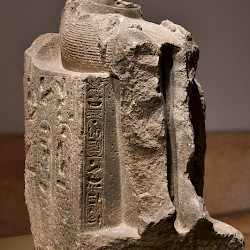 Byblos, Statue of pharaoh Osorkon II |
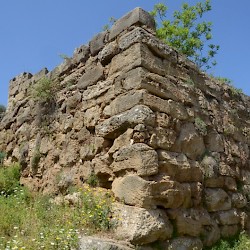 Byblos, Phoenician tower |
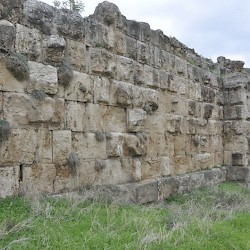 Byblos, Persian terrace, Wall |
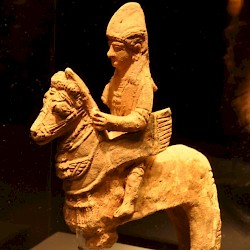 Byblos, Figurine of horseman |
Persians and Greeks
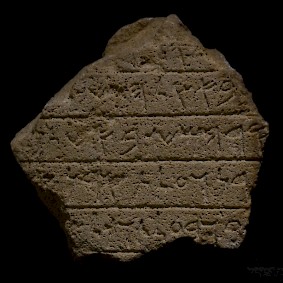
In 539 BCE, Babylon was conquered by Cyrus the Great, an event that marks the beginning of the Achaemenid (Persian) Empire. During the reign of Cyrus' son and successor Cambyses (r.530-522), the Persians conquered Egypt, which was only possible if they controlled the Mediterranean shores, which in turn necessitated the construction of a navy. Sidon and Byblos were to be the main ports. For two centuries, Byblos was an important center of Achaemenid power. A Persian fort, built around a Phoenician tower, is still visible.
The end of the Persian Empire came in 333, after the battle of Issus. The Macedonians of Alexander the Great conquered the Near East and Byblos was among the first towns to surrender. After the death of Alexander (in 323 BCE), the city was part of "Coele Syria", an area that was contested between the Macedonian successor states, the Seleucid and Ptolemaic Empires.
In the third century, the Ptolemies were in control. Among the monuments of this age belongs a splendid colossus in ancient Egyptian style, now in the Lebanese National Museum in Beirut. In the second century and first third of the first century BCE, the Seleucids were the masters of Byblos, until the Roman general Pompey the Great added Syria to the Roman Empire (64 BCE).
Roman City
As part of the Roman province of Syria, Byblos prospered and the city expanded from the double hill to a lower town. An aqueduct brought more water to the ancient well and several monuments were built: a colonnaded street, an odeon, and a cardo through the lower town. In the second century CE, a nymphaeum was added that has some very fine sculpture. There are several interesting Latin and Greek inscriptions.
Late Antiquity
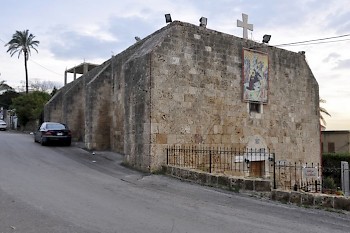
Christianity must have arrived in the second or third century and was, of course, recognized in the fourth century. The churches were in the lower town, not too far from the northern port. Byblos, now part of the Byzantine (or Late Roman) Empire, suffered from an earthquake in 551 BCE but remained inhabited, and remained inhabited as well after the Arab conquest.
The present city walls are Medieval; the castle that today dominates the town was built by the Crusaders. The well where it all started was still in use in 1936.
